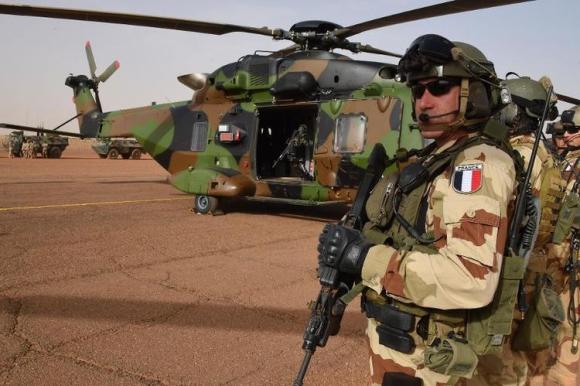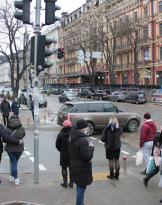The red-yellow-green tricolors of the river flutter on the poles by the river République du Mali. The port of Mopti is nothing more than a bank on the Niger where the boats dock. Dozens of stacked without order pinasse, the elongated boats with central tent, coal cooker and outboard motor. Sand-colored like the water they float on, they are the soul of the river.
This is Mopti: between mice and burnt rubbish, it is a city of mud and land lying on the water. A Mopti is played by the Sabana, who fights against relegating to the Malian Serie A. From a global perspective, it matters and does not count ...
Mopti is the true frontier of Mali. From here to the north, even after the official reconquest that drove the Islamists into the 2013, the music changes despite the tribal litanies remaining the same. The country actually becomes a barracks.
In Mopti, in reality, the tense air hardly reaches us. The 5a Legion of Gendarmerie , River Brigade they patrol the river and exploit local fishermen and traders on the pretext of preventing the infiltration of terrorists. With the celestial camouflage, mixed with the blue police uniforms, the gendarmes control passports and pretend to be active. Everything is dozing.
In 36 hours of boat from Mopti you reach Timbouctu, UNESCO legend of camel-drivers and desert men. To be honest, you arrive in Koriomé, port of Timbouctu, half an hour away inland, in the middle of the Sahara.
Timbouctu, is already famous from Morocco for the 52 camel days announced in Zagora. It is famous for its ancient history but also for the news of yesterday; the one that recalls the jihadist fury during the occupation of the 2012. He shares with Gao and all of northern Mali the memories of a war that has just ended but that winds under the ashes with his load of strange hatred.
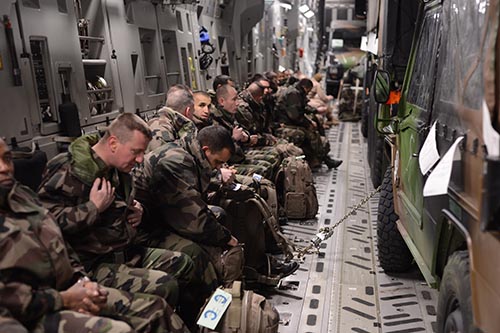
After the French intervention of the Salafis of AQMI, Ansar Dine and MUJAO, there is no longer any trace. At least officially the area was handed over to UN forces. But the dramas in Mali make no noise. Just like the anvil of the sun, there are always even if no one is paying attention to it. Peace and war in this boiling corner of the world are the same thing: neither one nor the other ever fully prevails.
After passing the airport, the arch that announces is crossed Ville de Tombouctou. To enter the city, as at every change of region, customs checks arrive. THE Bérets rouge, elites of the Malian army, soon give way to those faded blue of MUNISMA. The "techniques" of the Burkina military run fast, smiling proud of their brand new uniforms. Between sand and mud, with no trace of asphalt, the 4x4 of rare Safarist, non-profit organizations and unspecified associations also run.
Among public buildings, monuments to peacemaking and mosques is all a movie. Hostile but not too much.
In the main square between the Governorate and the police headquarters, the signs of the January 2013 bombings are still visible. The splinter holes disappear slowly as the reconstruction continues. Heavy artillery, aircraft bombs, automatic weapons: everything has gone through here, but it doesn't seem to matter to anyone. Mali is better not to talk. Islam is rooted but ultimately not oppressive and forgetting is convenient for everyone: the government that survives with the help of Paris; to the French who have maintained their interests; to the local militiamen who administer their small bags; to some jihadist waiting; to the UN that buries a problem under hard and hot sand.
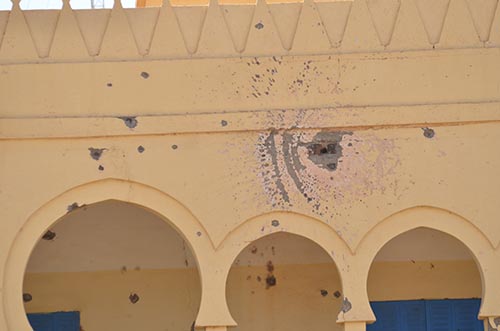
And between sand and dust everything closes. The black faces covered by veils and colored sweaters flow away beyond the Great Market. In an 100 soccer game against 100 played at sunset on a shabby esplanade, everything ends.
Timbouctu is long shadows. A piece of nothing where it is difficult to get but from where it is even more difficult to leave. A piece of history and desert that has become a symbol of a good Mali for cameras and official announcements.
Behind a baobab, soldiers of the MUNISMA enjoy downloading a large white SUV. Busted defenders trudge here and there amidst shady and less shady trades. A swarm of children moves in shoals, like dust.
Mali is everything here, in a few scenes repeated every day: a great French brother who discreetly controls the sun and poverty that have lasted for centuries.
To understand this, there would be no need to reach Gao, the capital of the self-proclaimed republic of Azawad de facto independent from Bamako up to 2013. The plot between Azawad and Islamists was the kernel of the Malian papillon solved with the guerre française… It was precisely on Gao, the most multi-ethnic and open city in Mali, that the main efforts of the reconquest operations were directed.
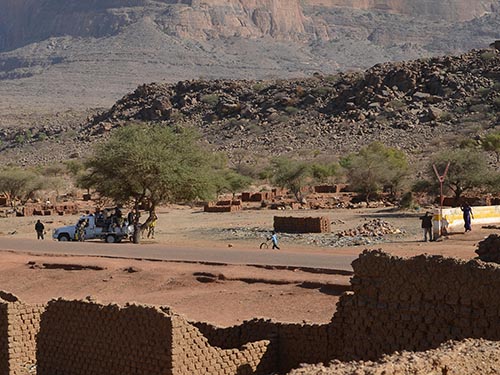
Rapidly patched after the war, today it is a huge military garrison. With its new concrete bridge over the marshy Niger, it appears as a border area. Between checkpoints and helicopters that buzz the landscape is lunar, manned by French armored vehicles and old Russian BTRsArmée du Mali and by the African Peacekeepers.
The places are famous for kidnappings of foreigners, but mine danger aside, the situation today is calm.
In this everyday absurdity one understands what geopolitics is without political correctness. The historical ties with France in these parts actually overwhelm all international demagogy. In spite of clumsy or even harmful UN interventions, Paris has got its hands dirty for its direct interests: among the strange dunes and the sun that dies, everything else doesn't count.
That it was Hollande's socialist government that put the face to it is the demonstration of how countries that do not delegate their caliber of power live national interests in an ideologically transversal way. Rien ne va plus.
Beyond the town there are no roads, but only the Sahara, the camels and the ocher color for 2500 km. Somewhere, the French special forces; perhaps from some other Jihad.
Beyond is the North. The north of the world.

